
We’ve all watched a movie or read a book and thought “Well, that character didn’t seem to do much?” Odds are, we just encountered a flat character.
Flat characters are often criticized for being underdeveloped or uninteresting, but believe it or not, they do have a key place in storytelling. So, it’s important we as writers understand what makes a character ‘flat’ and how they compare to other types of characters.
In today’s blog we’ll be talking all things ‘flat character’, when to use them, and how they can significantly elevate your writing. Of course, with all writing techniques, there are pitfalls to avoid – don’t worry, we won’t let you fall into them!
So, what are we waiting for?
In This Article:
- What Is a Flat Character?
- Flat vs. Round Characters
- Flat vs. Static Characters
- When Flat Characters Work (and When They Don’t)
- Examples of Flat Characters in Film and TV
- How to Avoid Flat Characters in Your Script
- FAQ
- Conclusion
What Is a Flat Character?
A flat character is a two-dimensional character with little depth who embodies a single trait, archetype, or idea.
Flat characters don’t undergo a significant change or growth. You’ll find their motives tend to be straightforward and unambiguous, and can be used in all genres from comedy to horror.
What defines a Flat Character?
They’re usually:
- Predictable
- Defined by a singular characteristic
- Not emotionally complex
- Static in development
A well-known flat character is the ‘evil stepmother’ figure in fairytales like Cinderella. Her role is to be cruel and stand in the hero’s way. Yes, she does serve a purpose in the story, but we rarely understand her motivations or know much about her backstory.

Flat vs. Round Characters
Everything has an opposite, and that’s what round characters are to flat ones.
Round characters are complex, multi-dimensional and are capable of change. They often face both internal and external conflicts and are shaped by their experiences throughout the story.
Key differences between flat and round characters include:
Depth
While round characters have many emotional layers, flat characters don’t.
Development
Flat characters remain the same while round characters evolve throughout the story.
Motivations
Round characters have nuanced motivations designed to draw the audience in and keep them engaged. On the other hand, flat characters have more straightforward motives, or ones that are unexplored.
Let’s put Sherlock Holmes and Dr. Watson head-to-head. While in the original stories, Sherlock is traditionally a relatively round character who evolves through his relationships and experiences, Watson is frequently the steady, unchanging sidekick.
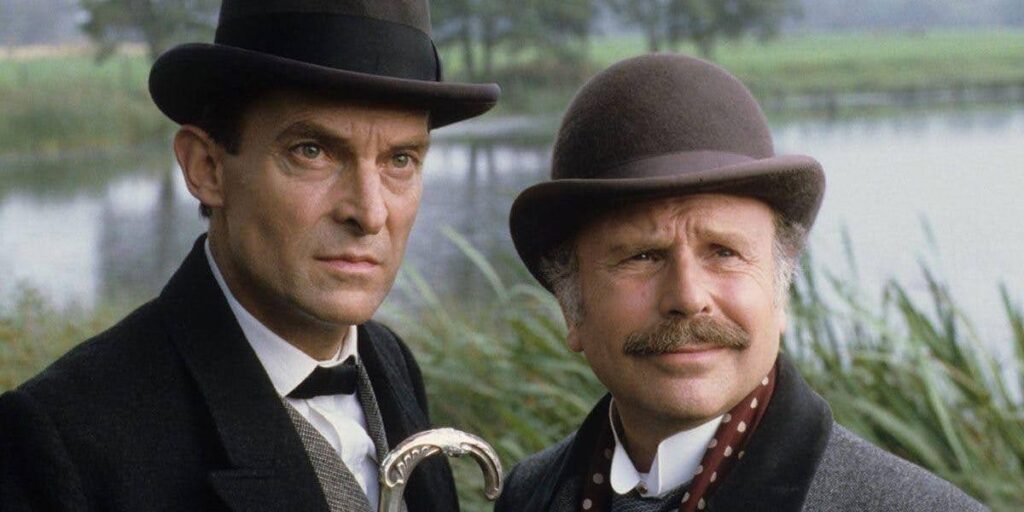
Of course, in the modern adaptations such as Sherlock (2010-2017), Watson’s character is more at the forefront, and we learn more about him.
Ready to write better characters?
Try Celtx’s story development tools to help lay the groundwork for a great script.
Sign up for free today!
Flat vs. Static Characters
While the terms ‘flat’ and ‘static’ are used interchangeably, they aren’t the same!
A static character is one who doesn’t change throughout a story, but this doesn’t mean they lack depth. Yes, they don’t evolve or change, but they can still be rich and interesting.
Meanwhile, a flat character lacks emotional depth and complexity.
James Bond is a great example of a static character profile as he’s suave, skilled and unflappable from start to finish. While he doesn’t change much during a movie, he definitely isn’t flat due to his continual displays of wit, intelligence, and emotional nuance.
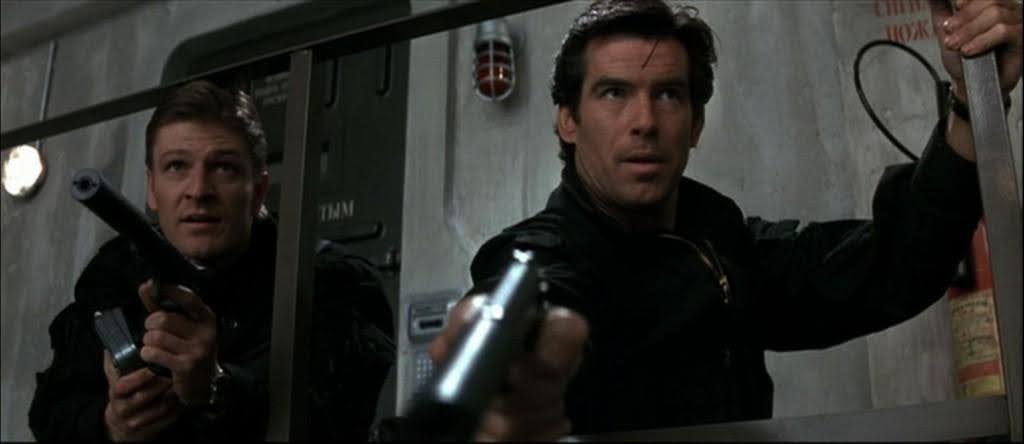
When Flat Characters Work (and When They Don’t)
Okay, we know what you’re thinking – flat character just seem meh. Well, we forgive you but they aren’t inherently bad. In fact, they can serve essential roles in a story, especially in supportive capacities or as character foil.
So, let’s look at when flat character work, and when they just fall flat on their face.
When Flat Characters Work
In Minor Roles
Not every character needs depth. For example, a barista who serves coffee to your main character doesn’t need a backstory and complex motivations.
Just like the members of the extensive star ship crews in Star Trek who exist solely to support the plot.
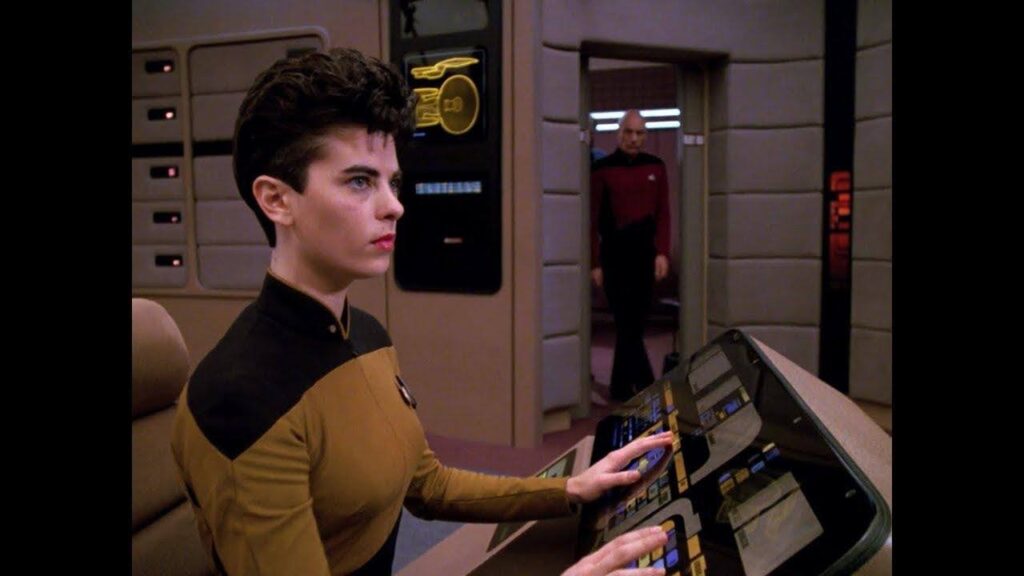
To Emphasize other Characters
Flat characters can highlight the complexities of the protagonist and help develop their story.
Think Emily from The Devil Wears Prada. She remains largely static for the majority of the movie but effectively contrasts with Andy’s evolution.
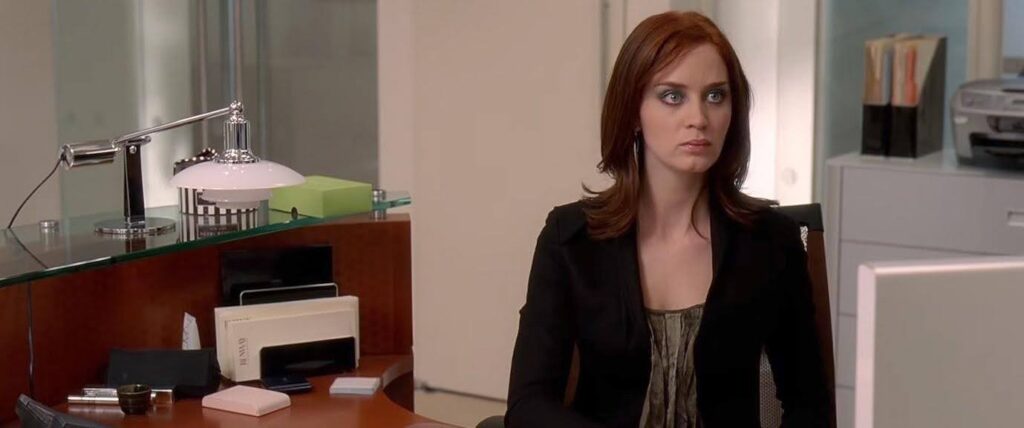
For Satirical or Comedic Purposes
Archetypes or exaggerated personalities can be effective tools to provide comic relief to a serious and dramatic story.
While Ron Swanson from Parks and Recreation is mostly unchanging, his exaggerated librarian persona bringing a unique humor to the show.

When Flat Characters Don’t Work
In Central Roles
A flat character can make your story feel shallow or uninspiring. You want to engage your audience from the beginning and give them reason to relate to your protagonist.
The film, The Last Airbender was criticized for its emotionally flat leads which undercut the depth of the story.

In Drama-Heavy Narratives
If you’re writing a story with high and emotional stakes, you may want to avoid flat characters. The stakes you’ve worked so hard to set up can fall flat when characters lack depth.
We can learn lessons like this from Batman v. Superman: Dawn of Justice which struggled to connect with its audience partly because Superman lacked emotional nuance.
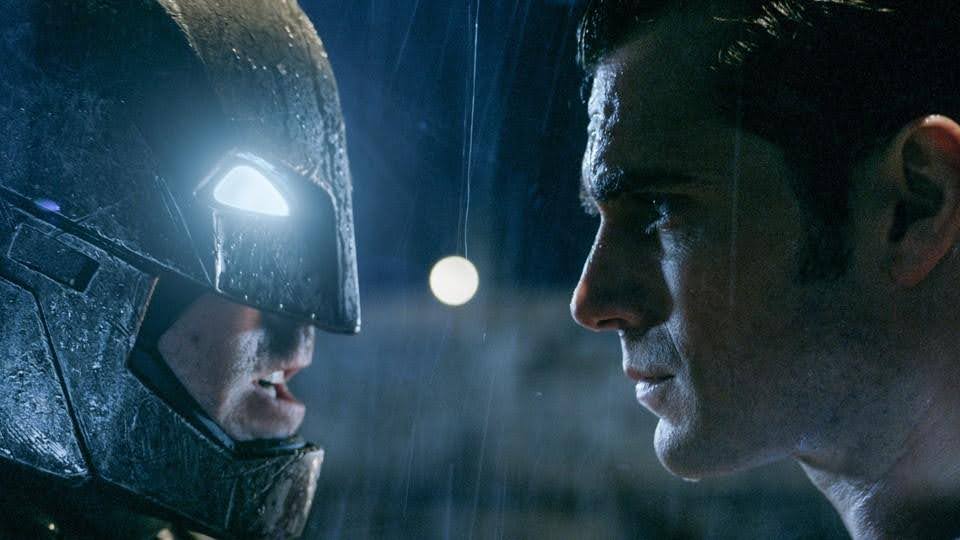
If they’re Overused
A story full of flat characters feels artificial and forgettable.
Shows like Riverdale have faced criticism for relying too much on trope-driven characters without meaningful growth.
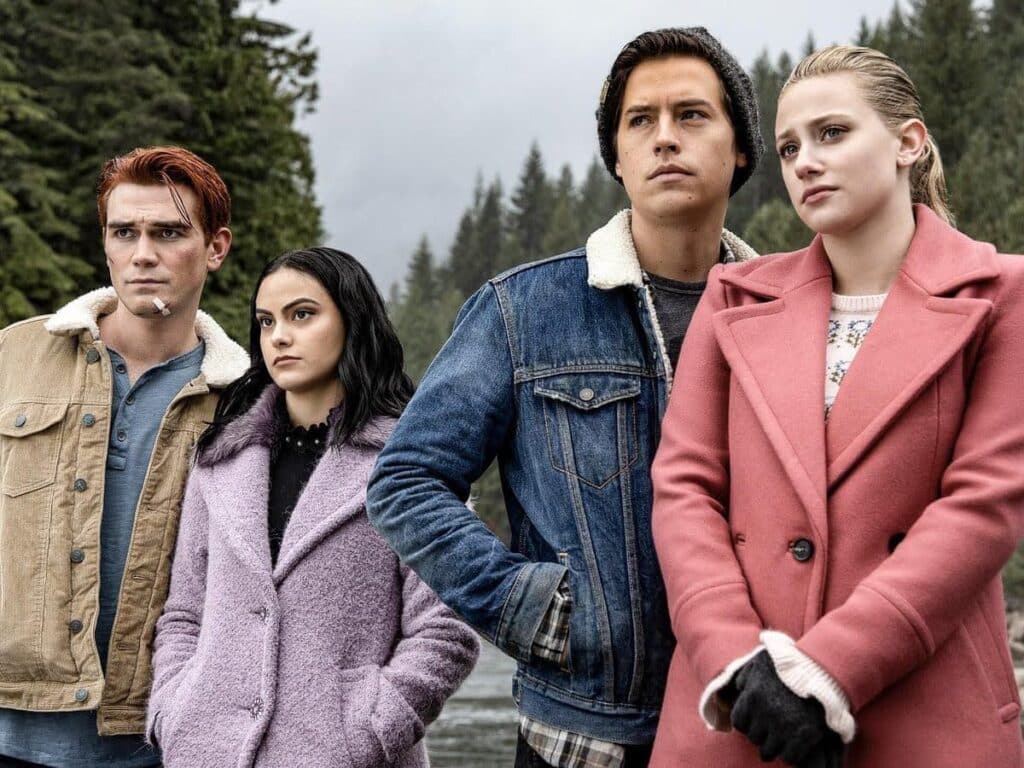
Start your next script with Celtx’s industry-standard
screenwriting software—built for storytellers.
Sign up today – it’s free!
Examples of Flat Characters in Film and TV
So now we know how not to use flat characters, let’s take a deep dive into where they have been used successfully in some of the best movies around.
Case Study #1 | Stormtroopers in Star Wars (1977-Present)
While the Stormtroopers have no backstory or unique personalities (until Finn who breaks the mold in The Force Awakens). They exist purely to serve the Empire and then the First Order, and by extension, the narrative.

Case Study #2 | Bruce the Shark in Finding Nemo (2003)
A humorous take on the predator archetype, Bruce is extremely entertaining with his “fish are friends, not food” mantra. However, he doesn’t evolve or offer any emotional depth, leaving this to Marlin and Dory as they continue their search for Nemo.
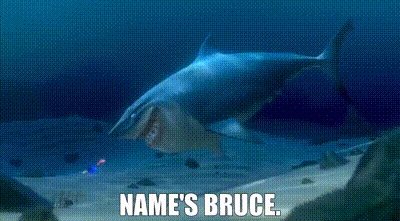
Case Study #3 | Karen in Mean Girls (2004)
Karen is the quintessential ‘dumb blonde’ trope who serves a comedic purpose throughout the highly tense chick flick. While she’s a fantastic character, she’s not overly complex.
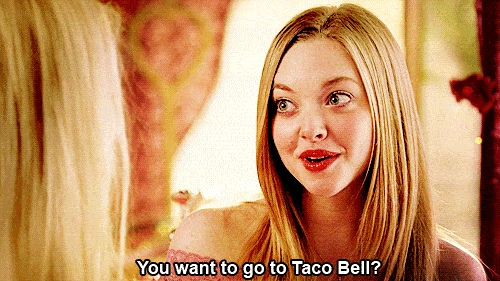
Case Study #4 | Uncle Vernon in Harry Potter (2001-2011)
Vernon Dursley is one-dimensional in his bigotry and fear of magic. He exists to provide conflict for Harry, not to explore his own psychology.

Case Study #5 | Mr. Collins in Pride and Prejudice (2005)
Mr. Collins is a flat caricature of a pompous clergyman who adds humor and tension to the story. However, he doesn’t develop or reveal any hidden depths for himself.
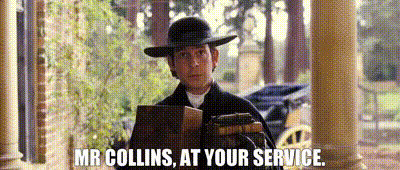
Case Study #6 | Janice and Gunther in Friends (1994-2004)
Janice is well-known for her nasal laugh and over-the-top personality. She plays a flat yet memorable role throughout the series that contrasts with the main cast’s emotional arcs.
Meanwhile, Gunther spends most of the series silently pining for Rachael. His role is limited and personality narrowly defined, but he does add flavor to the Central Perk setting of the famous sitcom.
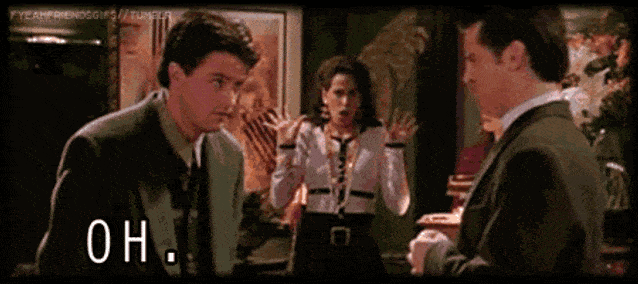
Case Study #7 | Newman in Seinfeld (1989-1998)
Yes, Newman may be more of a caricature than a developed character, but when he shows up, he causes chaos. It’s this predictability that adds to the show’s humor, and quite frankly, wouldn’t be the same without it!

Case Study #8 | Creed in The Office (2005-2013)
A minor member of the ensemble cast, Creed is rarely developed as a character. He often shows up to deliver a bizarre one-liner or exist mysteriously in the background. A standout flat character!

Case Study #9 | April Ludgate in Parks and Recreation (2009-2015)
Initially, April is sarcastic and emotionally distant with little depth. Over time she does develop, becoming a round character in later seasons.

How to Avoid Flat Characters in Your Script
So, we’ve established that flat characters do have a place in our stories, and by all means, use them in the right way.
However, we’re pretty certain that you’re here with us because you want to write compelling and memorable characters. We aim to please, so here are seven practical ways to avoid writing mediocre characters.
1. Give your characters goals and fears
Even a minor character should want something. Even the smallest of desires can create complexity.
Ask yourself: what do they fear? What do they hope for? How are they going to achieve it?
2. Use contradictions
Contradictions are your best friend here. Remember, real people contradict themselves. For example, you can be brave but still have a fear bubbling away inside. Adding contradictions humanizes characters, giving the audience something to relate to.
3. Subtly reveal a character’s backstory
Avoid information dumps like the plague! A single line of dialogue or a small action can suggest a character’s history.
4. Let the characters change (or even resist it)
Change shows a character’s depth. Even resisting an impending change is a form of complexity. It’s your job to work out what prevents them from evolving.
5. Make them affect the plot
Characters who only react aren’t interesting. Let them influence the story in some way, even if small.
6. Give the characters relationships
How characters interact with others can reveal who they really are. Whether characters are friends, rivals or loves, it’s these dynamics that add layers to their personalities and provide different levels of conflict throughout.
7. Avoid stereotypes
Once you know the rules, you can break them! While tropes can be useful, they can become lazy options when used without nuance. Make sure to add depth by challenging the expected traits that audiences will immediately work out.
FAQ
Are flat characters always bad?
No. Flat characters can be useful, especially in minor or comedic roles.
Can a flat character become round later on?
Absolutely. A flat character who grows throughout a story can become round by the end. This can work especially well in franchises. Just like Neville Longbottom in the Harry Potter series who we gradually learn more about. By the final movie, he is integral to the plot and its outcome, being the one to slay the final Horcrux: Nagini the snake.

Should every character be round?
Not all characters need to necessarily be round. Make sure to prioritize depth for your main characters, as these are the people your audience are following. Meanwhile, any supporting roles can remain flat if they serve the narrative.
Can I intentionally write a flat protagonist?
You can… but it’s very risky. Some minimalist or absurdist stories do this on purpose, but it requires a high level of craft to pull off without losing your audience’s interest.
Conclusion
Flat characters aren’t always villains of your script. They can be purposeful, funny, or symbolic. But knowing when and how to use them is key to effective storytelling. Strive to give your main characters depth, complexity, and agency. Flat characters can populate your world, but round characters should carry it. So, the next time someone reads your script, they won’t walk away saying, “Well, that character didn’t seem to do much.”
Give your characters life, and your story will thank you for it.
We’ll handle the formatting – you focus on your characters.
Click here to sign up for Celtx and start writing your script today.
Develop better, more relatable characters:
- 15 Essential Character Archetypes (And How to Use Them)
- Defining Stock Characters: Their Role & Classic Examples
- How to Create a Compelling Antagonist in Film and TV
